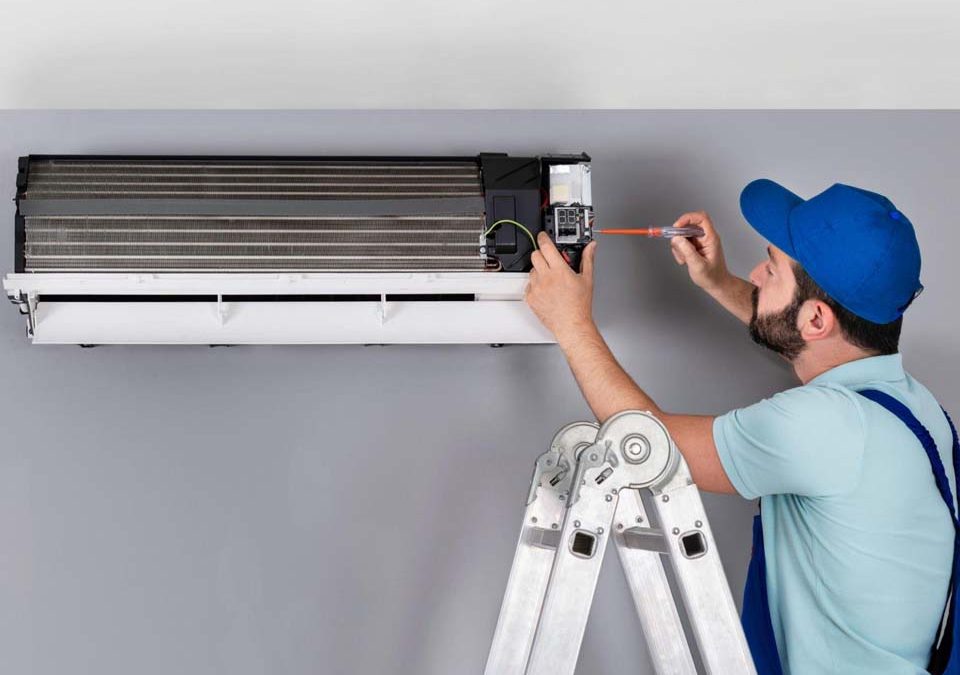This is particularly true if the air circulation on the upper level is inadequate. How do we improve circulation on the upper levels then? It is crucial that this issue be resolved as soon as possible. One of the most effective ways to maintain a comfortable temperature upstairs is to improve the circulation of air.
There are a few options for increasing ventilation on your top level which you can do yourself instead of calling aircon service near me. Put in some time and work, and your second story may be just as cosy as your first. The following are some helpful hints on how to improve ventilation in the second story:
1. Keep Air Conditioner Running in Fan Mode:
You may get airflow all day long if you set your air conditioner to operate on fan mode. This is due to the fact that the fan mode maintains air circulation while using very little power. You won’t overheat all day long and the atmosphere will remain comfortable.
The system is continually recycling and cleaning the air, which enhances the quality of the interior environment when combined with the installation of high-quality air filters and regular maintenance. Check the air filter often, since a dirty filter may restrict airflow.
2. Install a Ceiling Fan:
To improve ventilation at little cost, install a ceiling fan. A ceiling fan can do the job of an air conditioner and more while using a fraction of the energy. Fans do not really produce new cold air but rather circulate the existing air over a larger area. The air conditioner and fan may be used together for maximum comfort. Your air conditioner’s output of conditioned air may be improved by doing this.
3. Increase the Size of Return Vents:
The second story of a house with a central or ducted system will contain vents and ducts for air supply and return. The challenge is figuring out how to improve ventilation on the upper floors. If you enlarge the room’s vents and ducts and maintain the airflow moving, you may bring more air into the space.
The continual removal of warm air from the second story requires the installation of larger vents. This may aid in resolving issues with ventilation on the upper level.
Nevertheless, the restricted amount of desk space is a disadvantage of this option. This is not a viable choice if your home is older and there is not enough room to install more substantial vents or ducts.
4. Increase Number of Vents:
Why not add more vents and ducts if you can’t make them bigger? The hot air rising from the floor may be more easily captured and expelled if additional vents are installed. Nevertheless, this is limited by the availability of enough duct space. There is an alternative if you don’t have the space for extra ducts and vents.
5. Open the Vents:
This may sound like a no-brainer, but you’d be amazed at how often people forget to move their furniture out of the way of the air vents. Take a stroll around the room to see if any large pieces of furniture or equipment are blocking the vents. Move them around so air may flow freely into the room via the vents.
6. Cover Vents on Ground Level:
Vents and ducts in the building’s cooler basement may be closed up in part to direct more air to the higher floors. This ensures that the greatest volume of conditioned air is sent towards the higher level from the HVAC system. The bottom level vents need not be completely shut off.
If you want to see how much of an effect this has on the upstairs temperature, try shutting them just halfway. If it isn’t enough, you may try adjusting the vent closures until you reach the desired temperature. Ensure the bottom level doesn’t go without ventilation by not closing the vents too much.
7. Choose Ductless Cooling Systems:
Ductless air conditioners are convenient since they don’t need to rearrange your home’s layout or move walls. These air conditioners may be installed in a matter of hours with no substantial construction required. They can maintain a comfortable temperature in your home and direct conditioned air to specific rooms.
Mini-split, portable, and window air conditioners are all examples of ductless cooling systems that may help you save money and energy. As there is no ductwork, there is no risk of air leakage or loss.
8. Get a Zoned HVAC System:
It makes sense to use an air conditioner at maximum capacity if your home has many stories. As more air will be able to reach your upper level, you could decide that this is the best option. Yet, this might cause serious issues with the temperature and comfort of your first level. Consider also the energy that is being wasted here. A zoned HVAC system may be used to avoid this issue. Your current HVAC system may be used to divide the space into zones.
Each level or zone may have its own independent cooling system. Make the bottom level a separate zone from the rest of the house, for instance. This allows you to individually regulate the temperature on each level. The temperature on the second level may be adjusted to be greater than that of the first.
Separating your home into climate-controlled areas can not only improve your quality of life but will also cut down on your energy use. A smart thermostat with two zones may be used for central air conditioning, while a smart AC controller can be used for mini-split, portable, or window units. These high-tech climate controllers will make your life easier by letting you adjust the temperature from your phone.


